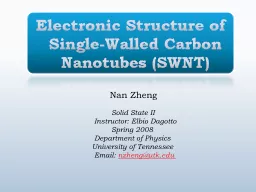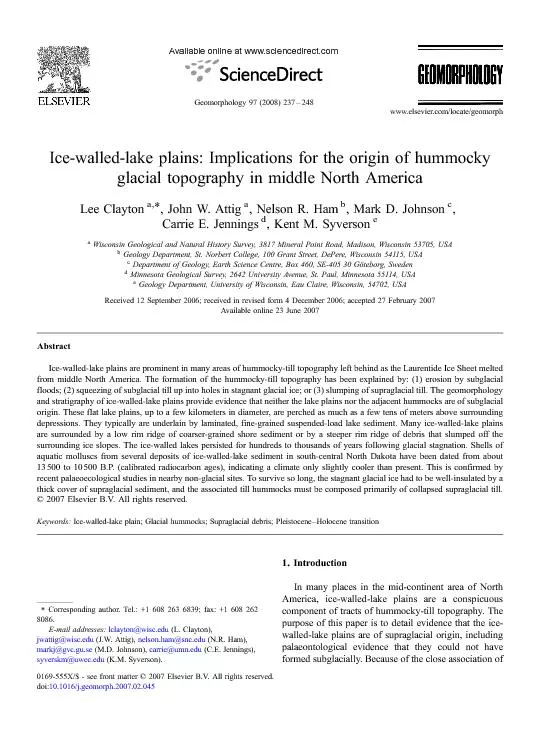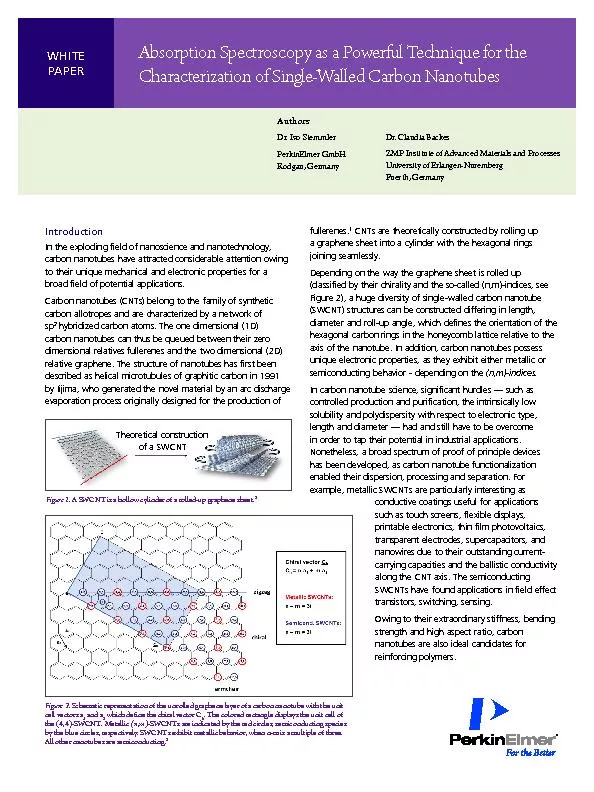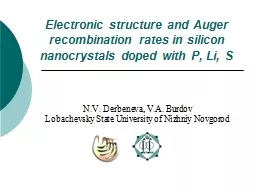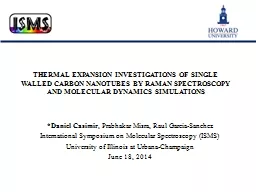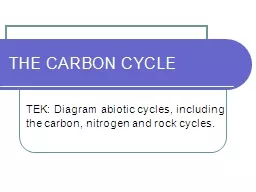PPT-Electronic Structure of Single-Walled Carbon
Author : celsa-spraggs | Published Date : 2015-10-20
Nanotubes SWNT Nan Zheng Solid State II Instructor Elbio Dagotto Spring 2008 Department of Physics University of Tennessee
Presentation Embed Code
Download Presentation
Download Presentation The PPT/PDF document "Electronic Structure of Single-Walled Ca..." is the property of its rightful owner. Permission is granted to download and print the materials on this website for personal, non-commercial use only, and to display it on your personal computer provided you do not modify the materials and that you retain all copyright notices contained in the materials. By downloading content from our website, you accept the terms of this agreement.
Electronic Structure of Single-Walled Carbon: Transcript
Download Rules Of Document
"Electronic Structure of Single-Walled Carbon"The content belongs to its owner. You may download and print it for personal use, without modification, and keep all copyright notices. By downloading, you agree to these terms.
Related Documents

